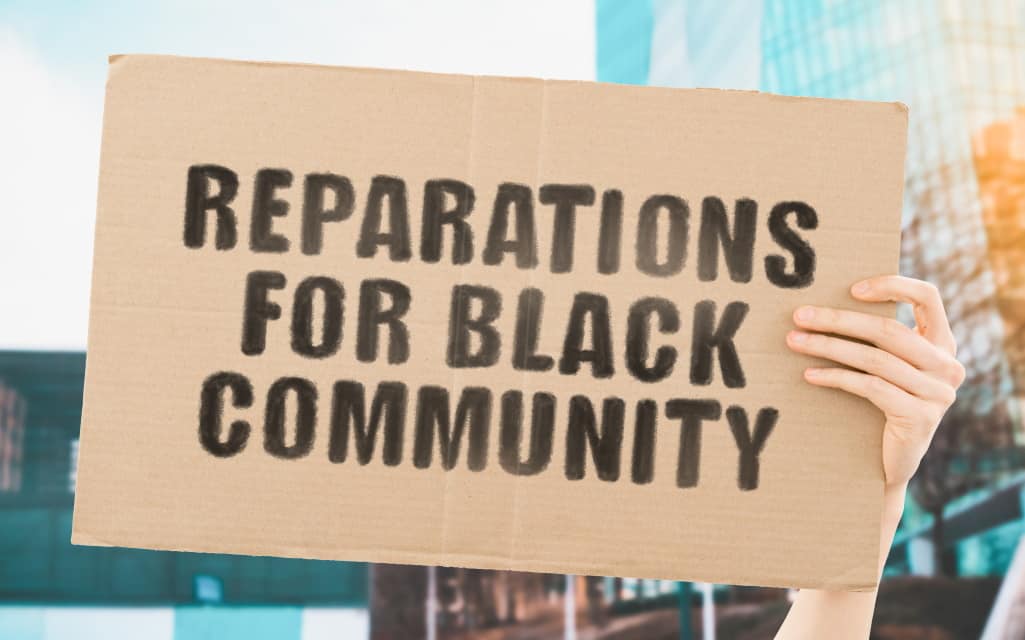Reparations are commonly recognized as being compensation for wrongdoing, abuse, or an injury. Reparations acknowledge the obligation of a group, state, or individual in repairing the consequences of its actions. Most notably, the consequences of violations against life or civil liberty.
Different Types of Reparations
The United Nations (UN) recognizes five formal types of reparations:
- Restitution: Restitution aims to restore victims back to their original status before the injustice occurred. Restitution can be monetary, or involve restoration of residence, employment, or liberty.
- Satisfaction: Satisfaction is a type of reparation that focuses on truth-seeking. These reparations include judicial sanctions, administrative actions, commemoration, and reburial or recovery of remains.
- Damages Compensation: Damages refers to physical, mental, or other harm caused by a violation of human rights. Damages compensation aims to compensate victims for economic and other damages, including loss of earnings and moral damages.
- Rehabilitation: Rehabilitation reparations provides means for medical, social, and psychological services. It also helps provide legal assistance to victims and their loved ones.
- Guarantee of Non-Repetition: This type of reparation aims to prevent future abuses. It most often comes in the form of reforms and legislation.
Examples of When Reparations Were Paid
Throughout history, reparations have been made to people or groups who were wronged by injustice. Some reparations have been paid to individuals and families, while others have been paid to countries.
World War I – Reparations to the State of Israel
Reparations have been used as a means of compensating victims since World War I. After WWI, reparations were paid to allies who had economic losses due to the war. Reparations were also paid to the State of Israel by the Federal Republic of Germany for crimes they committed against Jewish people living in the Third Reich-controlled areas.
World War II – Reparations to Japanese-Americans
After World War II, reparations were also paid to Japanese-Americans who were forced to live in internment camps during the war. With more than 120,000 people forced to live in these camps, the reparations were massive. Estimates suggest that payments awarded to Japanese families totaled around $38 million.
Apartheid – Reparations to Victims of Apartheid Government
In South Africa, the Apartheid government committed numerous human rights violations and other abuses. In the post-Apartheid government, the Truth and Reconciliations Commission recommended reparations be made to victims. The original recommended reparation totaled $360 million to be paid directly to victims. But in 2003, then-president Thabo Mbeki decided only to authorize $85 million. That resulted in much lower payments to victims, which totaled more than 16,000.
The Tuskegee Experiment
The Tuskegee experiment was a study designed to follow the progression of syphilis in Black men. In 1932, the Tuskegee Institute began a study originally called the “Tuskegee Study of Untreated Syphilis in the Negro Male.” The study included 600 Black men – 201 did not have syphilis and 399 did. No informed consent was provided to the participants. They were told they were being treated for “bad blood” and that they would have access to free medical care, meals, and burial insurance for participating. But participants were not offered treatment, including Penicillin, which is the preferred method of treating syphilis.
In 1974, the U.S. government reached a settlement with families affected by the experiment for $10 million. Participants, their immediate families, and their descendents were profoundly impacted by the experiment, and the settlement included lifelong medical treatment for victims and their families.
Reparations for Slavery
There have been numerous proposed reparations for the descendents of slaves in the U.S. Some reparations have been attempted, but most believe that these attempts have only tipped the iceberg. Today, proposals for reparations for slavery are highly debated as civil rights organizations call for reparations but the government largely is unsure of how, when, or how reparations can be paid.
Conclusion
Reparations is a concept that has increasing attention. However, there remains a great deal of uncertainty as to just how reparations will factor into today’s society, as well as the future. Many people think it is unfair for people today to pay for something that happened hundreds of years ago. Others believe that reparations can’t undo the damage done by injustices.
As the call for reparations continues, it will be interesting to see how the government, civil rights advocates, and the community at large respond.



